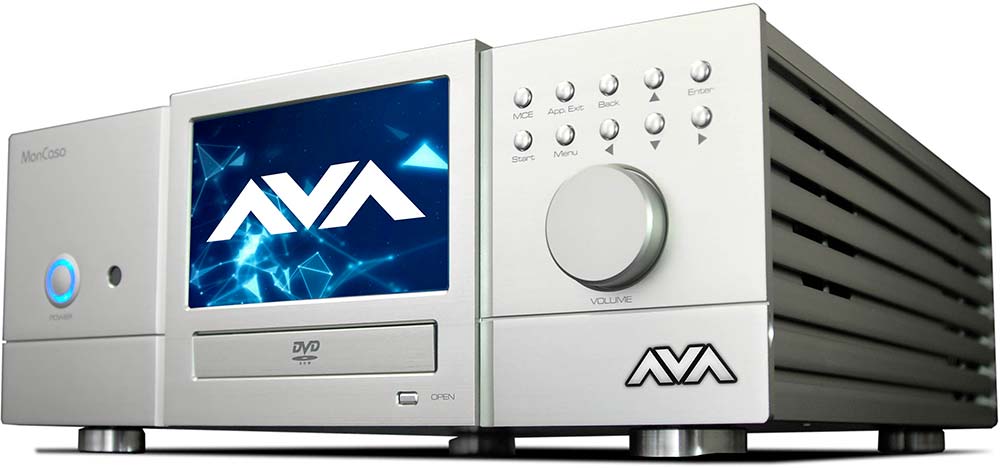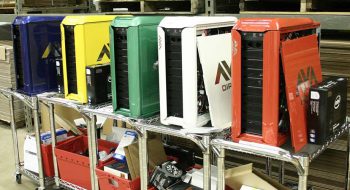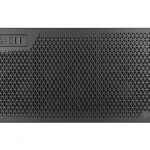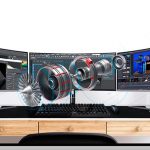Today everybody knows what a typical home theater is – TV set with big screen, set of multiple loudspeakers for 3-D audio and set of decks: DVD or Blu-ray player and amplifier. Of course, there are a couple of different variations of how one can be built: instead of TV screen it could be video-projector, number of loudspeakers can differ and multiple decks can be replaced by a single one that features universal functionality (so called out-of-the-box home theaters). All in all, it doesn’t change the point – all of that equipment is specially engineered and designed for one purpose only – to entertain the audience with crystal clear picture and sound, whether it is the movie or video of rock festival in Woodstock.
But, there could be a serious limitations for such kind of home theater– cost, inability to support all range of media formats that exist today and narrow flexibility and upgradability of the built-in features. And if cost might not be a problem for some of us, technical limitations can be quite difficult to overcome due to a very nature of such appliances – vast majority of the normal home theaters are not designed to be changed or upgraded.
So, is there any solution? Of course! We can built our own home theater by using a personal computer!
Custom Home Theatre PC
HTPC carries out the same idea as any “normal” home theater – to output the media content on the screen of the TV panel or through video-projector. However, it does so much better than normal home theater – it can playback, stream or share literally any media content there is! Playing back music and video of any format through the codecs installed, recording or time-shifting TV broadcasts or cable, viewing the pictures and slideshows, playing the games, receive additional information for media content from the Internet, printing photos from smartphone or organizing the library on media server the way you want it – you name it!
Advantages of Custom HTPC
Not to mention how cheap it can be – there is no need for expensive components, such as powerful, 8-core CPU, top-of-the-range video card or huge case with dozens of fans onboard. Middle-class CPU, motherboard with integrated video card or even hybrid CPU with built-in video chip and small, elegant and minimalistic design slim-type case will do the job right to the bone. Moreover, such components allow using fan-less heat sinks for CPU and GPU due to their low power consumption (hence low heat radiation), which gives another advantage – absence of noise that fans would produce. And we don’t want to be distracted by the noise in the background, while watching the movie, do we? All you would have to ensure is that your motherboard incorporates either HDMI, DVI or DisplayPort ports in order to output the stream you media content in digital form. Of course, if there would be a need to playback hi-definition videos or play 3D-video games, you might consider installing a bit more powerful CPU and discrete video card, which just confirms how flexible HTPC can be.
Another huge advantage of the HTPC – its nearly unlimited expandability in terms of connectivity with other devices, such as other PCs, repository servers with collections of your favorite movies and music (e.g. NAS) through cable or wireless network (Wi-Fi), or you would be able to play netflix on demand, for example, via web or any website for that matter. Wireless network, by the way, will give you another advantage – connecting to HTPC mobile devices such as tablets or smartphones. Having such a network of your home devices would give an opportunity to use another technology – DNLA (Digital Living Network Alliance). DNLA is an industry-wide standard that allows sharing multimedia content between your digital devices over a home network.
Software and codes
In the end, you would have to use a special software and wide range of audio/video codes (easy updatable thought the Internet, when new media formats would appear and available) in order to run your HTPC the way you want it. Up to date, plenty of software developing companies offer their solutions for that matter. You could even use simple Windows Media Center, which incorporates the core features for using it with HTPC. However, if you would like to have something more sophisticated, there are front-end solutions, which might offer enormous amount of options and settings, for example, MediaPortal or Plex. Each one of them has their cons and pros in terms of difficultness of setting up or additional hardware requirements – decision, which would be the right choice for you, will ultimately depend on your system configuration and the level of control you would like to have over your media content.









No comments yet